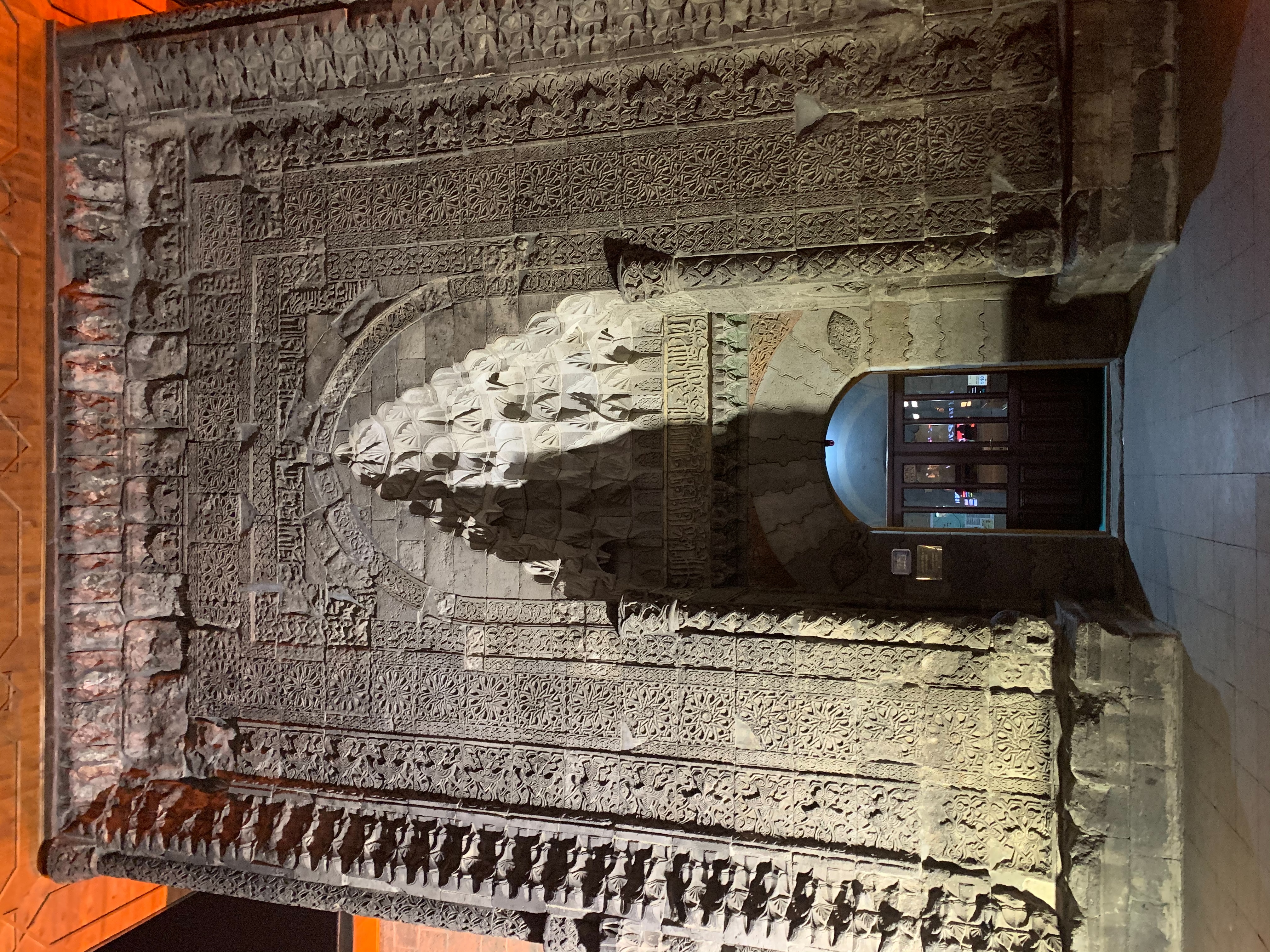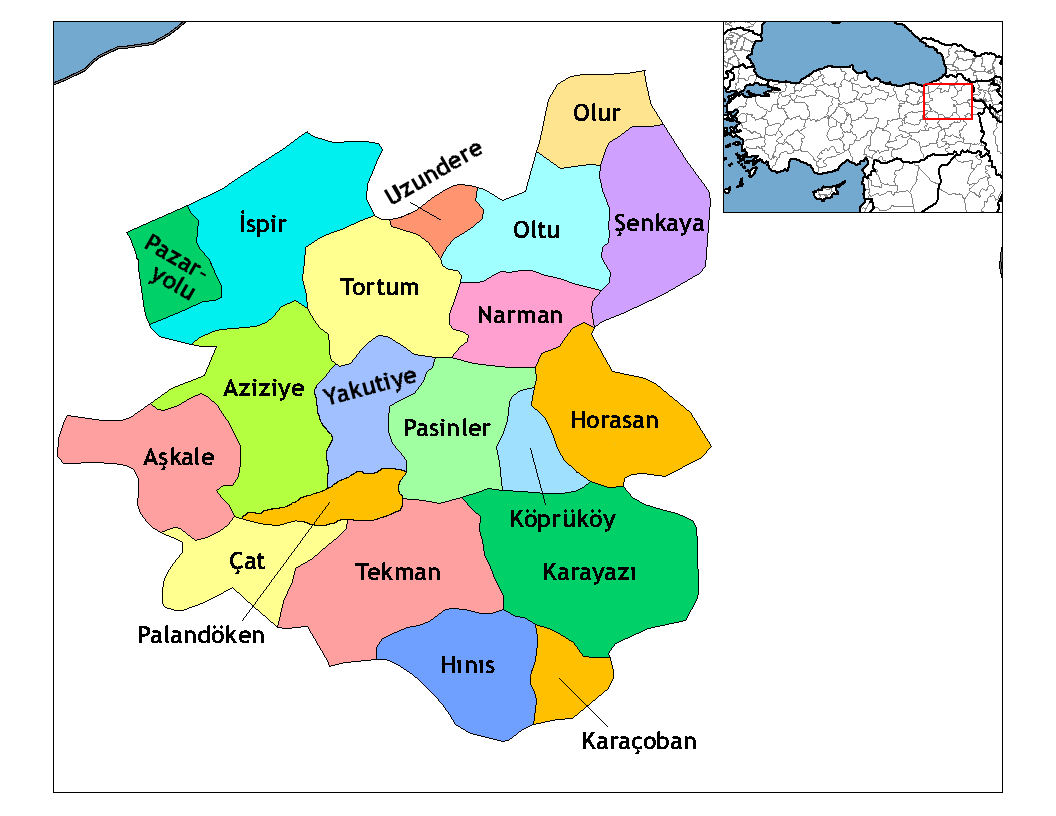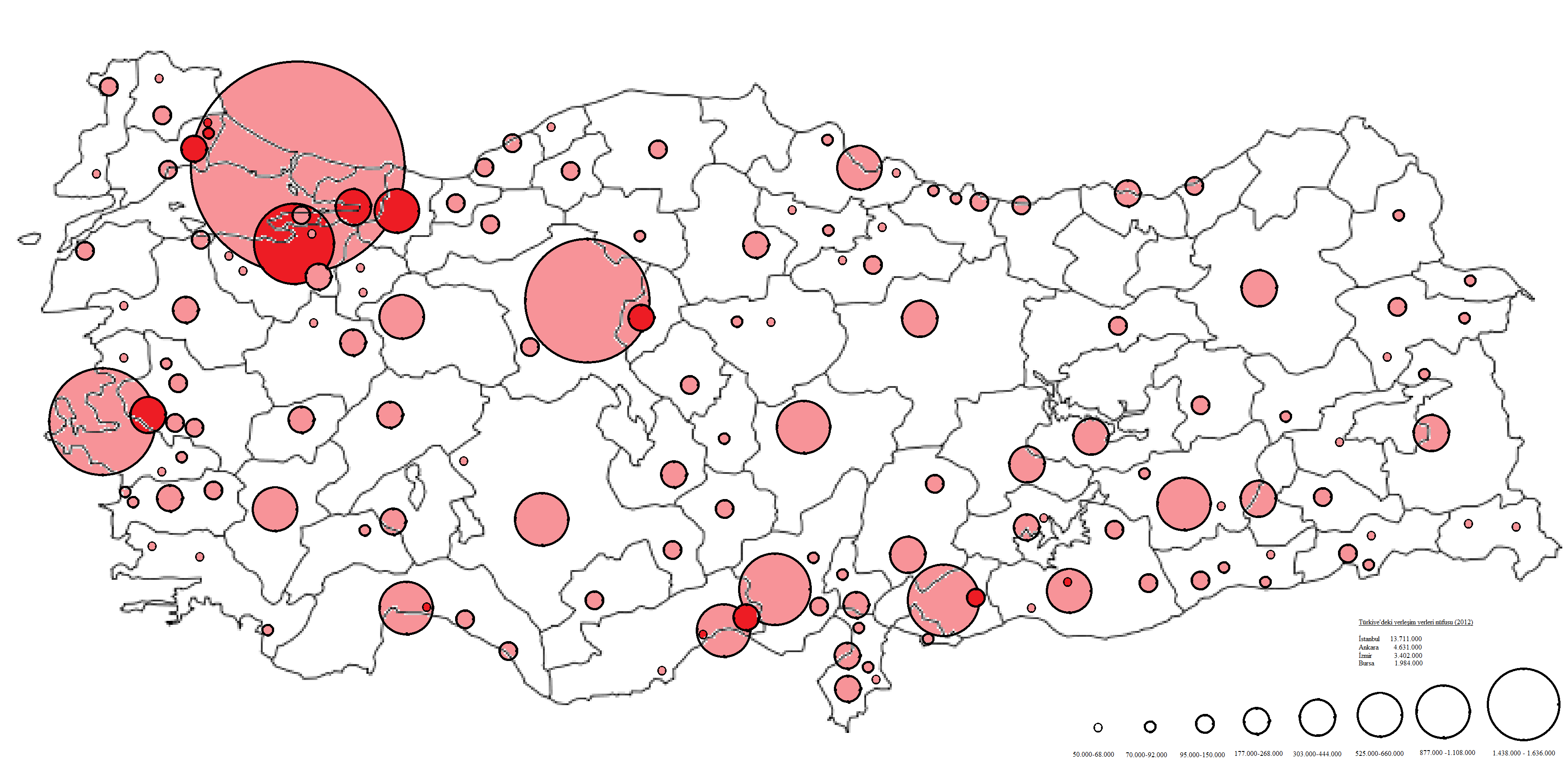|
Erzurum
Erzurum (; ) is a List of cities in Turkey, city in eastern Anatolia, Turkey. It is the largest city and capital of Erzurum Province and is 1,900 meters (6,233 feet) above sea level. Erzurum had a population of 367,250 in 2010. It is the site of ancient Theodosiopolis. The city uses the double-headed eagle as its coat-of-arms, a motif that has been a common symbol throughout Anatolia since the Bronze Age. Erzurum has winter sports facilities, hosted the 2011 Winter Universiade, and the 2023 Winter Deaflympics (in March 2024). Name and etymology The city was originally known in Armenian language, Armenian as Karno K'aghak' (), meaning city of Karin, to distinguish it from the district of Karin (wikt:Կարին, Կարին). It is presumed its name was derived from a local tribe called the Karenitis. Darbinian, M. "Erzurum," Armenian Soviet Encyclopedia. Yerevan: Armenian Academy of Sciences, 1978, vol. 4, p. 93. An alternate theory contends that a local princely family, the Kams ... [...More Info...] [...Related Items...] OR: [Wikipedia] [Google] [Baidu] |
Erzurum Province
Erzurum Province () is a province and metropolitan municipality in the Eastern Anatolia Region of Turkey. Its area is 25,006 km2, and its population is 749,754 (2022). The capital of the province is the city of Erzurum. It is the fourth largest province in all of Turkey. It is bordered by the provinces of Kars and Ağrı to the east, Muş and Bingöl to the south, Erzincan and Bayburt to the west, Rize and Artvin to the north and Ardahan to the northeast. The governor of the province is Mustafa Çiftçi, appointed in August 2023. The province has a Turkish majority. Geography The surface area of the province of Erzurum is the fourth biggest in Turkey. The majority of the province is elevated. Most plateaus are about above sea level, and the mountainous regions beyond the plateaus are and higher. Depression plains are located between the mountains and plateaus. The southern mountain ranges include the Palandöken Mountains (highest peak Büyük Ejder high) and t ... [...More Info...] [...Related Items...] OR: [Wikipedia] [Google] [Baidu] |
Erzurum Congress
Erzurum Congress () was an assembly of Turkish Revolutionaries held from 23 July to 4 August 1919 in the city of Erzurum, in eastern Turkey, in accordance with the previously issued Amasya Circular. The congress united delegates from six eastern provinces (vilayets) of the Ottoman Empire, many parts of which were under Allied occupation at the time. Background Mudros Armistice In the months leading up to the end of World War I, the Ottoman regime had undergone major restructuring. The government ministers of the Committee of Union and Progress, which ran the Ottoman government between 1913 and 1918, had resigned from office and fled the country soon afterwards. Successful Allied offensives in Salonika posed a direct threat to the Ottoman capital of Constantinople. Mehmed VI appointed Ahmed Izzet Pasha to the position of Grand Vizier and tasked him with the assignment of seeking an armistice with the Allied Powers and ending Ottoman involvement in the war. On 30 October 1918, ... [...More Info...] [...Related Items...] OR: [Wikipedia] [Google] [Baidu] |
2011 Winter Universiade
The XXV Winter Universiade, took place in Erzurum, Turkey between 27 January to 6 February. Erzurum is the city at the highest altitude in Turkey, at , and has over 320 cultural landmarks. Located in Eastern Anatolia Region, it is a city on the traditional Silk Road and has been governed by many cultures over the centuries. The Erzurum Ice Hockey Arena, located on the Cemal Gürsel Sports Campus, was newly built with an ice rink of 60m x 30m and 3,000 seats for spectators. Venues ;Snow disciplines: The Konaklı Ski Resort, devoted to alpine skiing competitions, is located from the city center, stretching over a terrain of . Four ski lifts serve six race courses for slalom, giant slalom and Super Giant slalom events. The Kandilli Ski Resort, located from the city center at an altitude of and stretching over land, is the venue for biathlon and Nordic combined competitions. The Palandöken Ski Resort is located at an altitude of . It hosts snowboarding and freestyle ski ... [...More Info...] [...Related Items...] OR: [Wikipedia] [Google] [Baidu] |
List Of Cities In Turkey
This is a list of the largest cities and towns in Turkey by population, which includes cities and towns that are provincial capitals or have a population of at least 7,000. The total population of Turkey is 85,279,553 according to the 2023 estimate, making it the 18th most populated country in the world. *Istanbul, Turkey's economic and cultural capital, is the largest city with a population of 15.84 million in its metropolitan area as of 2021, making it the 17th most populated city in the world. *Ankara, the capital of Turkey and its second-largest city, has a population of 5.7 million in its metropolitan area as of 2021. *İzmir, Turkey’s third-largest city, has a population of over 4.3 million in its metropolitan area as of 2019. *Bursa, Turkey's fourth-largest city, has a population of over 3.1 million in its metropolitan area as of 2021. *Antalya, Turkey's fifth-largest city, has a population of 2.6 million in its metropolitan area as of 2019. Cities and towns with more ... [...More Info...] [...Related Items...] OR: [Wikipedia] [Google] [Baidu] |
Palandöken Mountain
Palandöken Mountain (or shortly Palandöken) is a high tectonic mountain in Erzurum Province, Turkey. The summit is at a distance of only from Erzurum city center, which itself extends at an elevation of . Skiing On the road from Erzurum to the summit, the Palandöken ski resort is located at the mountain village called Başköy, high, and the distance between the station and the city is . The ski trail is the longest in Turkey. Due to fog and risk of avalanche, the Ejder lifts and trails are sometimes closed. The skiing season may begin in November and last as long as until June. In 2008-2010 more lifts have been opened, now there are 8 in all. There are four hotels on the mountain: Polat Renaissance hotel, Dedeman hotel, Dedeman Ski Lodge, Palan Hotel and Xanadu Snow White. A ski resort has been constructed at the mountain village Konaklı, about from the city. 2011 Winter Universiade In 2011, Erzurum hosted the 25th Winter Universiade. The alpine skiing competition t ... [...More Info...] [...Related Items...] OR: [Wikipedia] [Google] [Baidu] |
Yakutiye Medresesi
Yakutiye Madrasa () is a historical 14th-century Madrasa in Erzurum, Turkey. The madrasa was built in 1310 by order of a local governor of the Ilkhanids, Hoca Yakut, and it is named after him.DK Eyewitness Travel Guide: Turkey: Turkey, Suzanne Swan, page 318, 2012 Building It is a rectangular building with an inner courtyard, surrounded by the rooms for the students. It has a monumental portal decorated with stone carvings and one Minaret with geometrical decorations. There is also an adjoining Kümbet. Today the building is used as a museum dedicated to ethnography and Turkish and Islamic art. Vault The Yakutiye Madrasa mosque has a vault decorated with ''muqarna'' design and a central oculus, which was constructed in 1310 and ultimately derived from the vault of the Armenian ''gavit A ''gavit'' (; gawit’) or ''zhamatun'' (Armenian: ) is a congressional room or mausoleum added to the entrance of a church, and therefore often contiguous to its west side, in a Medieval A ... [...More Info...] [...Related Items...] OR: [Wikipedia] [Google] [Baidu] |
Metropolitan Municipalities In Turkey
There are 81 provinces in Turkey (). Among the Provinces of Turkey, 81 provinces, 30 provinces are designated metropolitan municipalities (). Metropolitan municipalities are subdivided into districts (), where List of districts in Turkey, each district includes a corresponding district municipality, which is a second tier municipality. History The first metropolitan municipalities were established in 1984. These were the three most populous cities in Turkey, namely; Istanbul, Ankara, and İzmir. In each metropolitan municipality a number of second level municipalities (ilçe municipality) were established. In 1986, four new metropolitan municipalities were established: Adana, Bursa, Gaziantep and Konya. Two years later the total number was increased to eight with the addition of Kayseri. In 1993, seven new metropolitan municipalities were established: Antalya, Diyarbakır, Erzurum, Eskişehir, Mersin, İzmit, Kocaeli and Samsun. Following the 1999 İzmit earthquake, earthquake of 19 ... [...More Info...] [...Related Items...] OR: [Wikipedia] [Google] [Baidu] |
Provinces Of Turkey
Turkey is divided into 81 provinces (). Each province is divided into a number of districts of Turkey, districts (). Each provincial government is seated in the central district (). For non-Metropolitan municipalities in Turkey, metropolitan municipality designated provinces, the central district bears the name of the province (e.g. the city/district of Rize is the central district of Rize Province). In the Ottoman Empire, the corresponding unit was the ''vilayet''. Each province is administered by an appointed governor () from the Ministry of the Interior (Turkey), Ministry of the Interior. Background After the collapse of the Ottoman Empire and the Republic Day (Turkey), official establishment of the Republic of Turkey on 29 October 1923, changes were made to the administrative system. Two years later, Ardahan Province, Ardahan, Beyoğlu, Çatalca, Tunceli, Dersim, Ergani, Gelibolu, :tr:Genç_(il), Genç, Kozan, Adana, Kozan, Oltu, Muş Province, Muş, Siverek and Üsküdar pro ... [...More Info...] [...Related Items...] OR: [Wikipedia] [Google] [Baidu] |
Deaflympics
The Deaflympics, also known as Deaflympiad (previously called World Games for the Deaf, and International Games for the Deaf) are a periodic series of multi-sport events sanctioned by the International Olympic Committee (IOC) at which deaf athletes compete at an elite level. Unlike the athletes in other IOC-sanctioned events (the Olympics, the Paralympics, and the Special Olympics), athletes cannot be guided by sounds (such as starting pistols, bullhorn commands or referee whistles).International Committee of Sports for the Deaf – News . Deaflympics.com. Retrieved 17 October 2011. The games have been organized by the '' Comité International des S ... [...More Info...] [...Related Items...] OR: [Wikipedia] [Google] [Baidu] |
Double-headed Eagle
The double-headed eagle is an Iconology, iconographic symbol originating in the Bronze Age. The earliest predecessors of the symbol can be found in Mycenaean Greece and in the Ancient Near East, especially in Mesopotamian and Hittite Empire#iconography, Hittite iconography. Most modern uses of the emblem are directly or indirectly associated with its use by the Palaiologos dynasty of the Byzantine Empire, a use possibly derived from the Roman Empire, Roman Imperial Aquila (Roman), Aquila. High Middle Ages, High medieval iterations of the motif can be found in Islamic Spain, Medieval France, France, the First Bulgarian Empire, Bulgarian Empire and the Serbian principality of Grand Principality of Serbia, Raška. From the 13th century onward it appeared within the Islamic world in the Seljuk Sultanate of Rum and the Mamluk Sultanate (Cairo), Mamluk Sultanate, and within the Christian world in Albania in the Middle Ages, Albania, the Holy Roman Empire, Tsardom of Russia, Russia, and ... [...More Info...] [...Related Items...] OR: [Wikipedia] [Google] [Baidu] |
Arab Conquest Of Armenia
The Muslim conquest of Armenia occurred in the mid-7th century, with the first Arab raids into the country occurring in 639/640. At that time, the Byzantine and Sasanian sections of Armenia had just been united under the Byzantine-aligned Armenian prince Theodore Rshtuni. Several Arab attacks and Byzantine-Armenian counterattacks occurred in the 640s. In 652, facing a renewed Arab assault, Rshtuni broke with the Byzantines and made an agreement with Mu'awiya (then governor of Syria) to accept Muslim rule. Rshtuni's death in 654 and Arab internal conflicts after 656 temporarily weakened Arab control over Armenia, but Arab rule was decisively reasserted after Mu'awiya's accession as caliph in 661. Sources The details of the early conquest of Armenia by the Arabs are uncertain, as the various Arabic, Greek, and Armenian sources contradict each other. The main sources for the period are the eyewitness account of the Armenian bishop Sebeos, along with the history of the 8th-century ... [...More Info...] [...Related Items...] OR: [Wikipedia] [Google] [Baidu] |
Armenian Language
Armenian (endonym: , , ) is an Indo-European languages, Indo-European language and the sole member of the independent branch of the Armenian language family. It is the native language of the Armenians, Armenian people and the official language of Armenia. Historically spoken in the Armenian highlands, today Armenian is also widely spoken throughout the Armenian diaspora. Armenian is written in its own writing system, the Armenian alphabet, introduced in 405 AD by Saint Mesrop Mashtots. The estimated number of Armenian speakers worldwide is between five and seven million. History Classification and origins Armenian is an independent branch of the Indo-European languages. It is of interest to linguists for its distinctive phonological changes within that family. Armenian exhibits Centum and satem languages, more satemization than centumization, although it is not classified as belonging to either of these subgroups. Some linguists tentatively conclude that Armenian, Greek ... [...More Info...] [...Related Items...] OR: [Wikipedia] [Google] [Baidu] |





